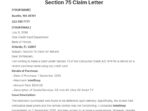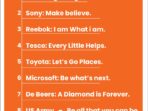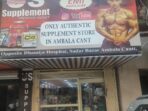Insurance Premium Vs Copay – If you are something like me, you spend most of your life to avoid scary and the confusion of health insurance. But unfortunately, we need to learn some time in our lives. Maybe this is your first full -time job, and you are currently facing a plan choice, or maybe you’ve been insurance for years, but you’ve never found it before surgery or accident. However, you only understand that your knowledge of health insurance is not as wide as you think. But don’t be afraid; This article will cover all the basics, so you can understand and choose the right plan.
Health insurance alone is not so scary for this concept. Health insurance is a ban on medical expenses, whether it means doctor’s appointment, surgery, medicine, etc., although you usually do not have high medical expenses, health insurance protects you in the worst cases. The possibility of an emergency is a ban that will help you cover thousands of dollars, these unpredictable medical events may be charged.
Insurance Premium Vs Copay

Your premium is the amount of money you pay for each month for insurance. Basically, this is your monthly insurance expenses. This can change every year, taking into account things like inflation and the amount of healthcare expenses in medical reserves. However, unlike car insurance, your bonuses do not appear and go down, depending on your health.
How To Understand Your Employer-sponsored Health Insurance
Your premium is the cost that your employer often donates when you get health insurance through your work. Therefore, the main part of your understanding of bonuses is to learn how much you contribute to your employer compared to your employer. Also, depending on your employer, your bonus may change.
Your deduction is the amount you will pay for your health expenses before your insurance company starts to cover the cost. For example, your insurer can set your annual deduction of $ 1,500, which means that they will only start to cover medical costs only when you pay and document $ 1,500 for pocket expenses (also known as $ 1,500 for your item that will be covered by your plan).
Your contributions, the services and contributions of non -work service providers are usually not counted in your deductions. What is calculated depends on the insurance plan and the services and medicines they usually cover. However, some preventive services such as vaccination, contraceptives and some types of diseases may be protected before cuts.
It is important to check the day of your health insurance company reset the deductions throughout the year. It may not always be January 1st.
How Do Commerical (ppo Vs Hmo) Insurance Plans Work?
Even after the cut, you still need to make a copy (“copy”). Usually payments are lower fixed payments that you will make to accommodate the service or recipe section. For example, say a meeting with your main care provider is usually worth $ 300 from your pocket. In this case, your copy can be set for a $ 50 payment. So when you get a deduction, you will pay $ 50 for a trip instead.
It is important to note that your copy may vary in service (that is, hospital visits may be larger than PCP visits). In addition, some services (preventive services) can be protected before you reach your deduction and only require copies. In addition, plans with higher donations may not require copies.
Communication is the same, unless it is the percentage of cost you have covered for service once you have reached the deduction. Your general insurance usually depends on your plan. For example, if you have plans to accommodate your insurance 80% of the cost, then your amount of insurance is 20%. This means you have to pay 20% of your costs for pockets for most covered services. So, for example, if the service is around $ 300 and you have reached your deduction, you will pay 20% ($ 60) from your pocket.

The amount allowed is the highest cost of your insurance to be covered by the service. Usually, if you go to your insurance network provider (you can know what provider is covered by contacting your insurance company), your service provider and insurer have agreed to your supplier’s tax amount, whether your deduction has been reached.
Understanding Your Health Insurance
For example, if your service provider usually takes $ 200 for a meeting, but they have agreed to pay only $ 150 for people with your insurance company (the amount allowed), you must pay only $ 150 for your appointment if you have not reached your deduction. If you have reached the deduction, you will have to pay less.
It is important to pay attention to your medical account to make sure you are not charged for the amount allowed if you go to your insurance network service provider. The billing section can make a mistake, so remember.
To say that if your insurance allows the service provider to be contacted for their network and the service provider will impose a certain amount of service, you will need to pay the difference between your insurance and the amount of your supplier’s tax.
Fortunately, this is the limit to what you know in deductions, copies and friends. This limit is set by your insurance company and is called the maximum pocket pocket. Once this limit has been reached, insurance covers 100% of the covered cost. So, say, your maximum insurance plan is $ 5,000. In this case, when you will pay $ 5,000 in deductions, copies and partners, your insurance company starts to accommodate 100% copies and amounts of insurance.
Health Insurance Jargon Decoded
Unfortunately, some costs are not included in your maximum pocket. These include your monthly installment, non -job expenses, services that are not subject to your plan, and expenses exceeding the allowable amount.
Private Health Insurance is a health insurance provided by private insurance companies such as Aetna, Anthem and Blue Cross. Private insurance is often more expensive than government health insurance, but offers more flexibility and coverage capabilities. They can also serve more medical services than government health insurance. There are two types of private health insurance.
Many health insurance people are offered through their work. Maybe your employer will have some proposed plans or plans and cover some of your health insurance costs (usually your bonus). Therefore, it will be cheaper than personal health insurance. In addition, this means that the percentage you pay for premiums is from your paycheck fee, and eventually save money.

All companies with more than 50 full -time employees require employees to be provided with health insurance. If your work has less than 50 employees working full -time, they are not required to provide health insurance, but they can still. Smaller employers can enter a program called Small Business Health Options (Shop). The store allows small employers to provide health insurance for their employees.
Health Insurance: Net Payoff Protection: Navigating Health Insurance Costs
Another option is to buy your personal health plan. Individual plans allow you to choose any plan you want and regardless of your work. However, if you are not entitled to government subsidies, your personal plan may be more expensive as you do not share costs with your employer.
Government health insurance is funded by the government and is provided to those who may not have access to a private or inability health insurance plan. There are several types of government health insurance.
Medicare is a federal health insurance given to 65 years or older, disabled and those with kidney disease. There are four parts of Medicare, each with different services. Part A is hospital insurance and includes living in hospitals, nursing institution care, hospital care and several other healthcare services. Part B is medical insurance and includes doctors, medical supplies, outside hospital care and preventive services. Finally, Part D helps to accommodate prescription drugs and recommends vaccines. You can sign up in some parts, depending on what you need.
Finally, Part C options are offered through a private insurance company, called Medicare Advantage. This option is an alternative plan of parts A, B and D, which covers additional advantages. In this way, it can also be more limited to what they are right -to be sure, so make sure you do your research.
A Guide To Understanding Your Deductible
In addition, many people buy additional plans that offer cheaper coverage than what Medicare covers. You can buy these additional plans through the market. Again, it is important to do detailed research when choosing an insurance plan.
Medicaid is a federal government and a country -funded insurance program for older adults, pregnant women and lower income, children or disability. Each state offers its own Medicaid plan with different suitability requirements and plans/coverage capabilities.
Children’s Health Insurance Program (CHIP) is a government and state insurance program that provides low -income children who may not reach Medicaid. This type of insurance is offered through Medicaid or other chips and governs each state.

It is important to evaluate the cost of healthcare during choosing a plan. For example, if you already have a special team of medical or mental health services providers, you should choose the plans that will be on their network. By paying attention to what













